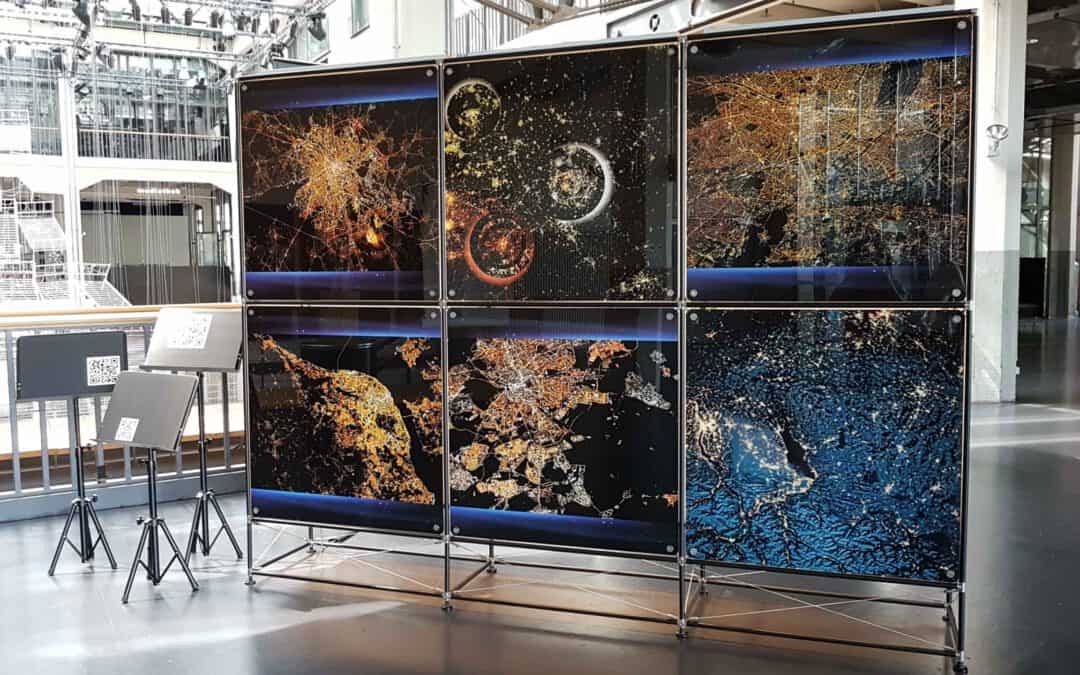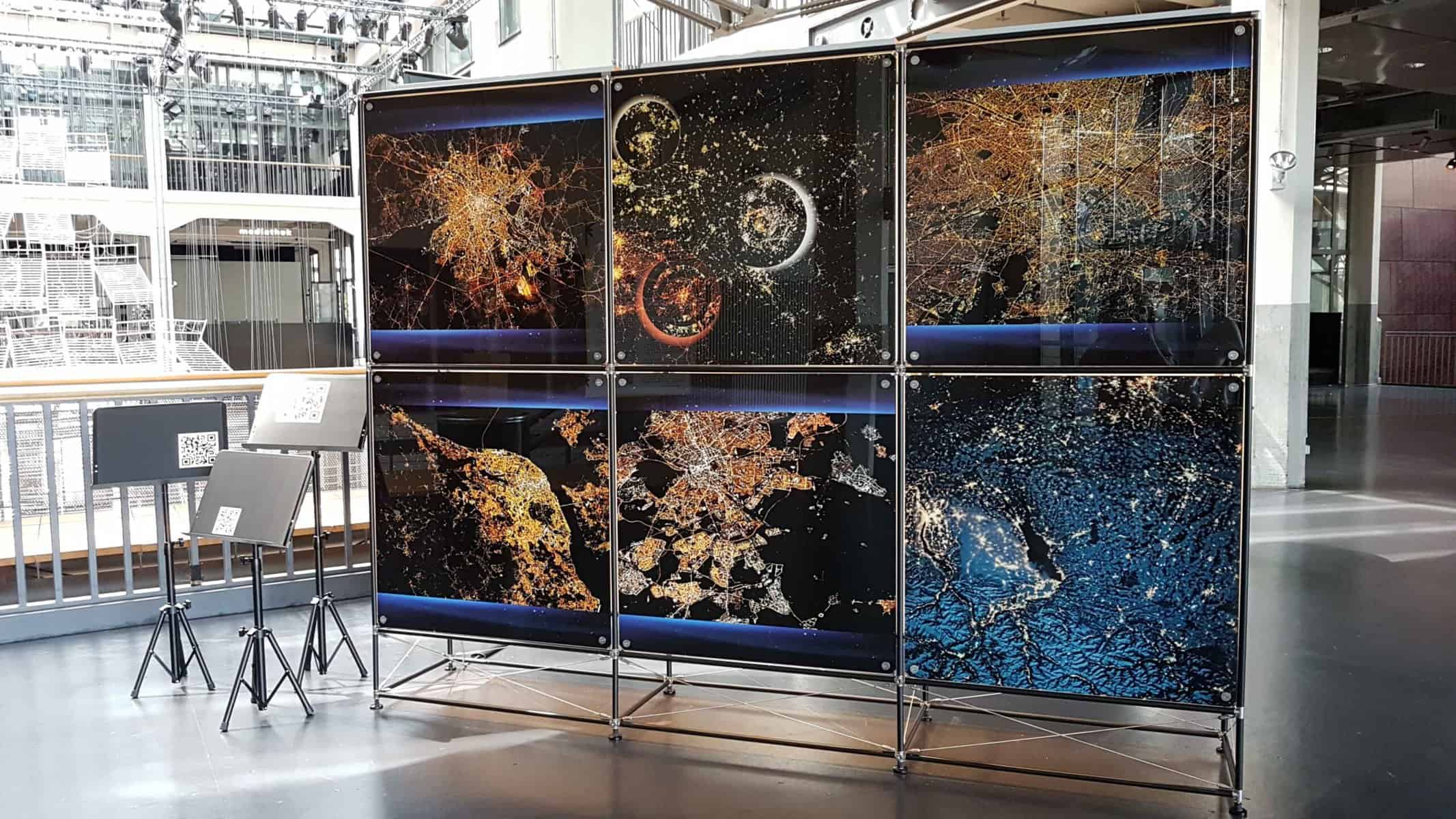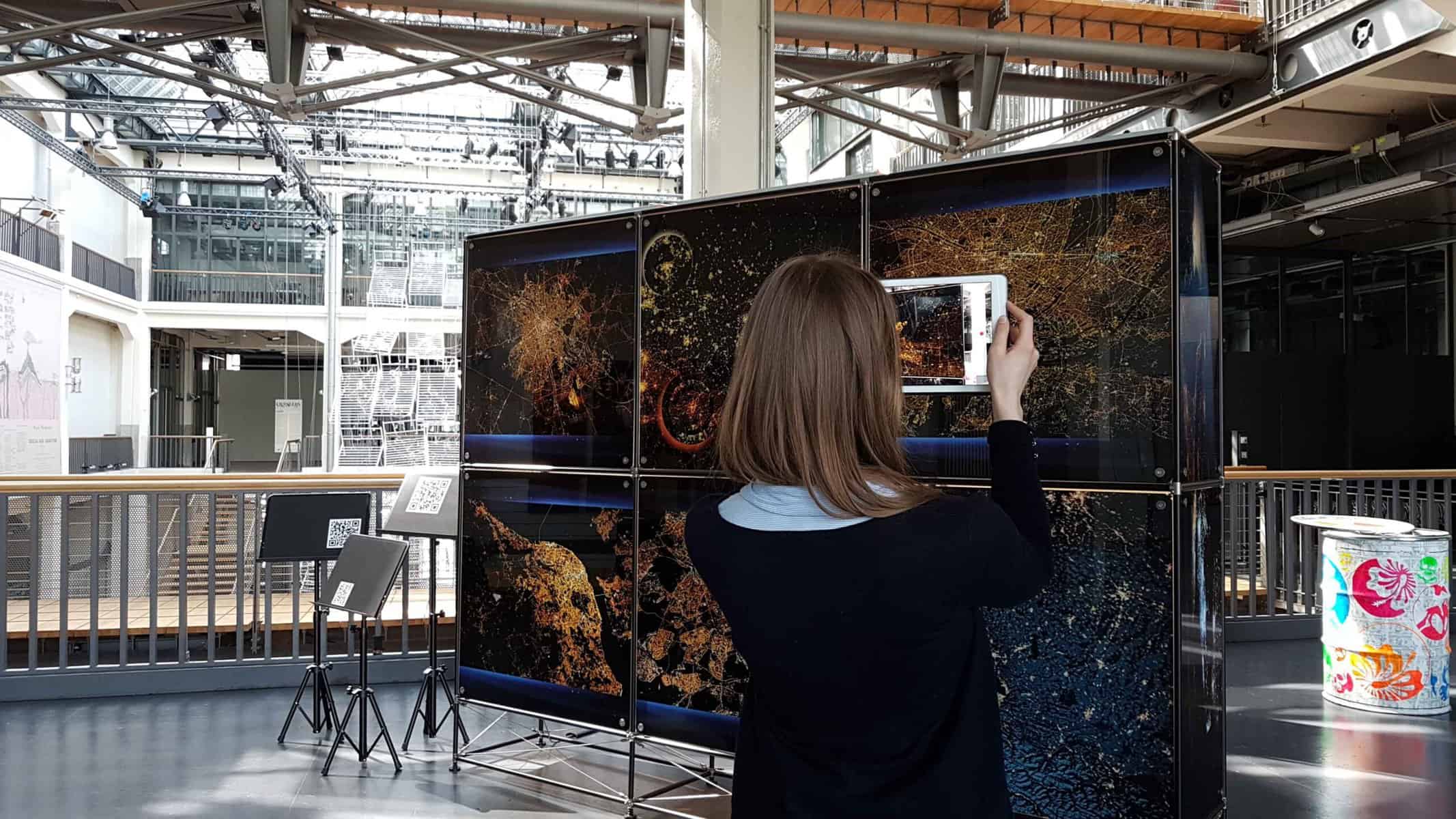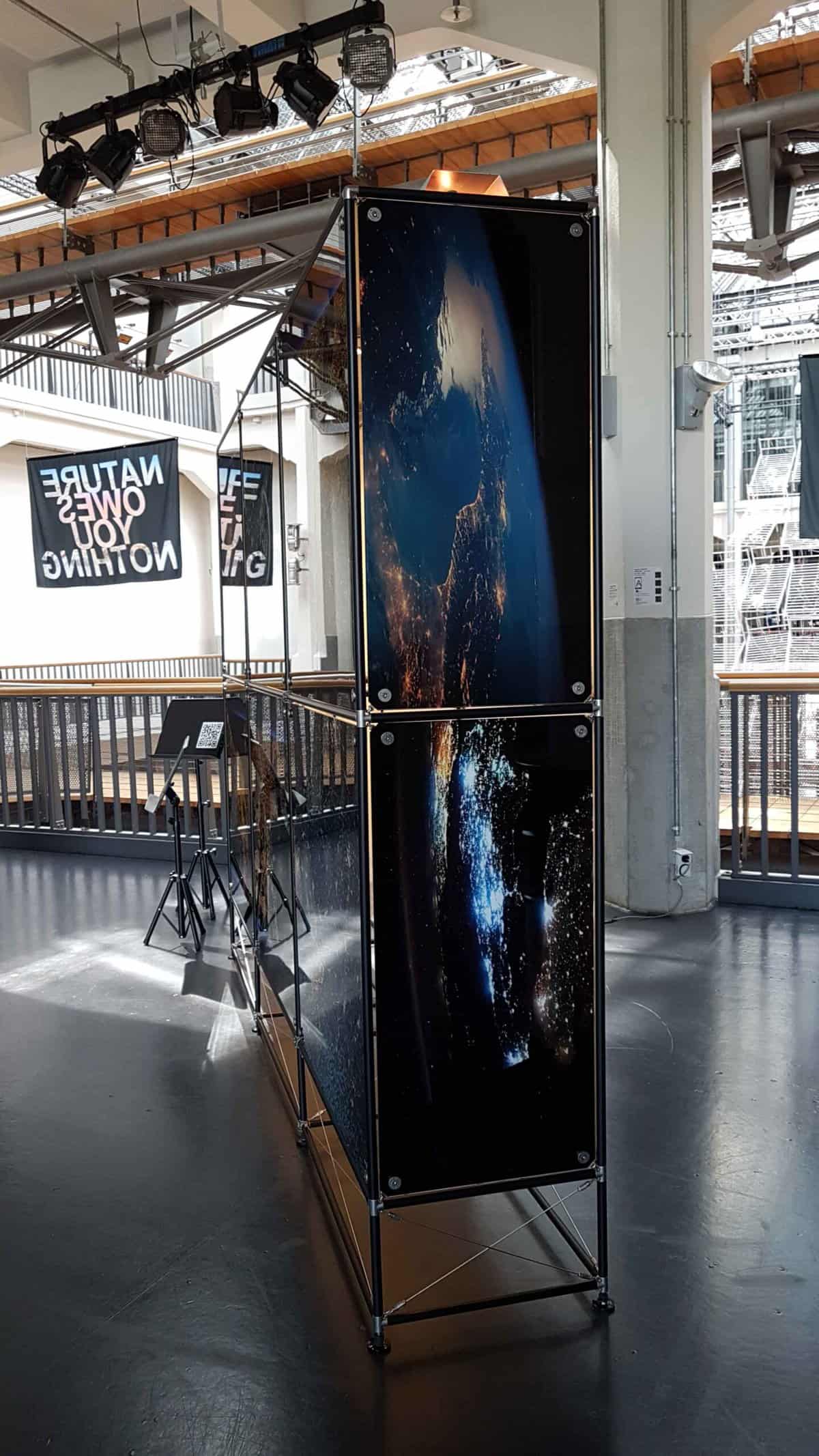Sabine Schäfer
EUROPA – so nah, so fern, 2021
Audiovisual installation
with augmented reality (AR) and audio QR code
Metal, glass, graphic, light, audio composition,
AR application, music stand with audio QR codes on alu-dibond boards
Exhibition „Europa, so fern und doch so nah!“, 1.05.-6.06.2021, ZKM Karlsruhe
as part of the „25. Europäischen Kulturtage“ by the city of Karlsruhe more
Sabine Schäfer. EUROPA – so nah, so fern, 2021
The centerpiece of the exhibition is a two-part work by Karlsruhe-based media artist and composer Sabine Schäfer. Her works are part of the collections of the ZKM and the city of Wolfsburg.
The two-part work has visual and auditory components: 16 printed glass plates are suspended in the free-standing, luminous light metal object. Associated with it is a trio of music stands that hold the notations of a three-part sound composition using large-format QR codes.
The image gallery presents colorful portraits of the earth in shades ranging from blue and yellow-orange to red and bright white, hung in double rows around the rectangular object.
These are satellite images of eight continental views and as many European Union capitals, showing views at night.
The base material for the city views are satellite images from the ISS, International Space Station, which were processed by scientists for this project. Four out of eight of the aforementioned big city views can be scanned using a smartphone or tablet and ARTIVIVE’s free augmented reality app.
In contrast to the light-filled metropolitan views, the less to not at all illuminated sections of the earth reveal plan squares that refer to the more natural state of the earth’s surface, facing away from the sun, not shining by themselves.
Where the luminosity of the cities reveals their structural pattern to us, these are shaped by bluish-looking framings in the upper and lower areas into a landscape format characteristic of the cinema image. These framings are aesthetically implied as an earth atmosphere, but in the context of the large cities they refer to their inherent ambience – the invisible haze that has lingered over them since their creation. The decontextualized atmosphere becomes a framing and thus a content element that can be interpreted as a price without which neither the big city nor the view of it can be had.
By means of augmented reality, the viewer can undertake virtual zoom-in journeys into the big cities, Berlin, Brussels, Paris, and Rome, via an image-scanning app, and set in motion or change his visual and mentally associative view of courses and relations.
The imaginary camera journeys show the widely ramified, luminous streets of the EU capitals in their interconnectedness and fragility. The factor of time also leads these journeys into a historical thread, since the development of large cities cannot be thought of without the overcoming and structuring of space and time, also independent of day and night. Here, light seems to symbolically stand for the subjugation and colonization not only of space but also of time, and refers to the empowerment and inflection of physical quantities and their transformation into energy, communication and data transmission.
There are no limits to the associative thoughts of neuronal connections, interconnectedness and network formation in such a view from an outside standpoint or, better, from an astronautical point of view.
Thus also the thought of artificial worlds germinates, which seem to form and multiply silently around the globe, as the three circular moons on the view of the Benelux countries suggest. Or is this already the visibility of those bubbles in which our digital world, down to the individual, is retreating? Perhaps, however, we have long since found ourselves in a “suicide mission” and are looking from afar at the catastrophes, infernos and collapses that are imminent for us. In any case, the astronautical view of the Earth is a view in suspension and a view from a great distance and only in this way allows us to sense the immense dimensions of global forces.
Consequently, the two image motifs on the narrow sides of the installation ultimately turn the dimensions of orientation upside down: Thus, all horizons are given in portrait format, so that the luminous events of the cities show themselves to a viewer in a now free-floating state only as a glittering rain of light, which can mean anything – from wars to eruptions of the earth or large-scale forest fires, the extent of which we can actually only experience through the satellite images of the media.
Under this global view, Europe recedes into the distance and the reflection on its union more than 70 years ago for the purpose of solving economic and ecological tasks allows the European idea of solving global questions across countries to live on in a next larger community in the sense of a global union.
The interactive astronautical large-scale installation is accompanied by a trio of music stands, facing each other and extended at different heights, reminiscent of a nuclear family. Instead of sheet music, however, each stand holds a panel on which a QR code can be seen in different positions and sizes. If the viewer scans this with his smartphone, a separate sound composition sounds for each code. The compositions interpret and comment on the current situation in three different ways: visionary-fictional, classically cathartic or purely scientific.
Original voices of students of KIT, Karlsruhe Institute of Technology and the University of Music, Karlsruhe were used for this purpose.
Each of the audio compositions gives rise to auditory images that connotatively convey different states of mind and accompany the view of the distant portraits of our current, technically shaped earth.
The compositional polyphony silences any polarization in favor of the undisputed perception of a state of emergency and the call for each individual to act responsibly and self-determinedly.
(Dr. A. Hünnekens – Excerpt from the introduction to the exhibition)
Please accept YouTube cookies to play this video. By accepting you will be accessing content from YouTube, a service provided by an external third party.
If you accept this notice, your choice will be saved and the page will refresh.




